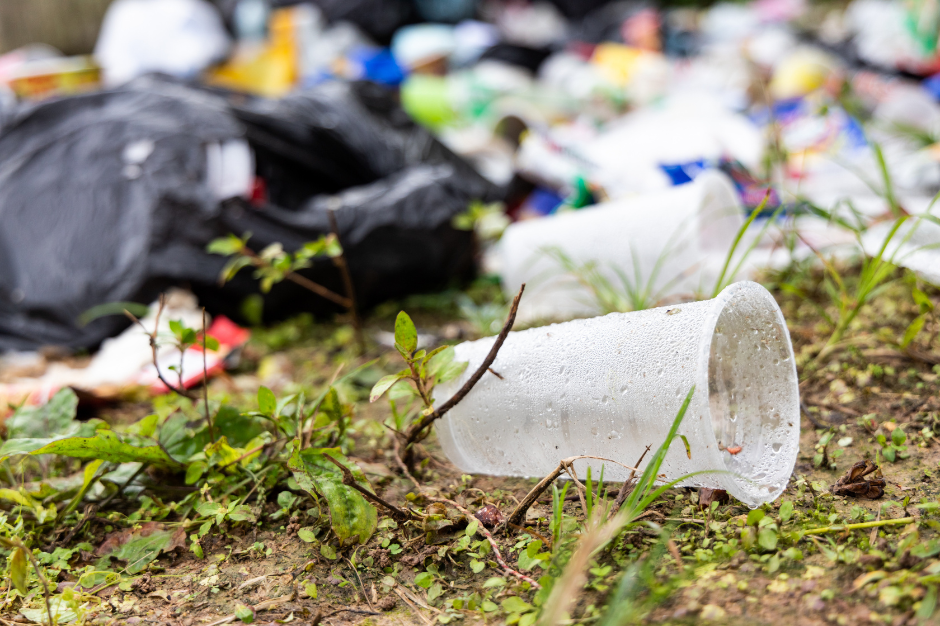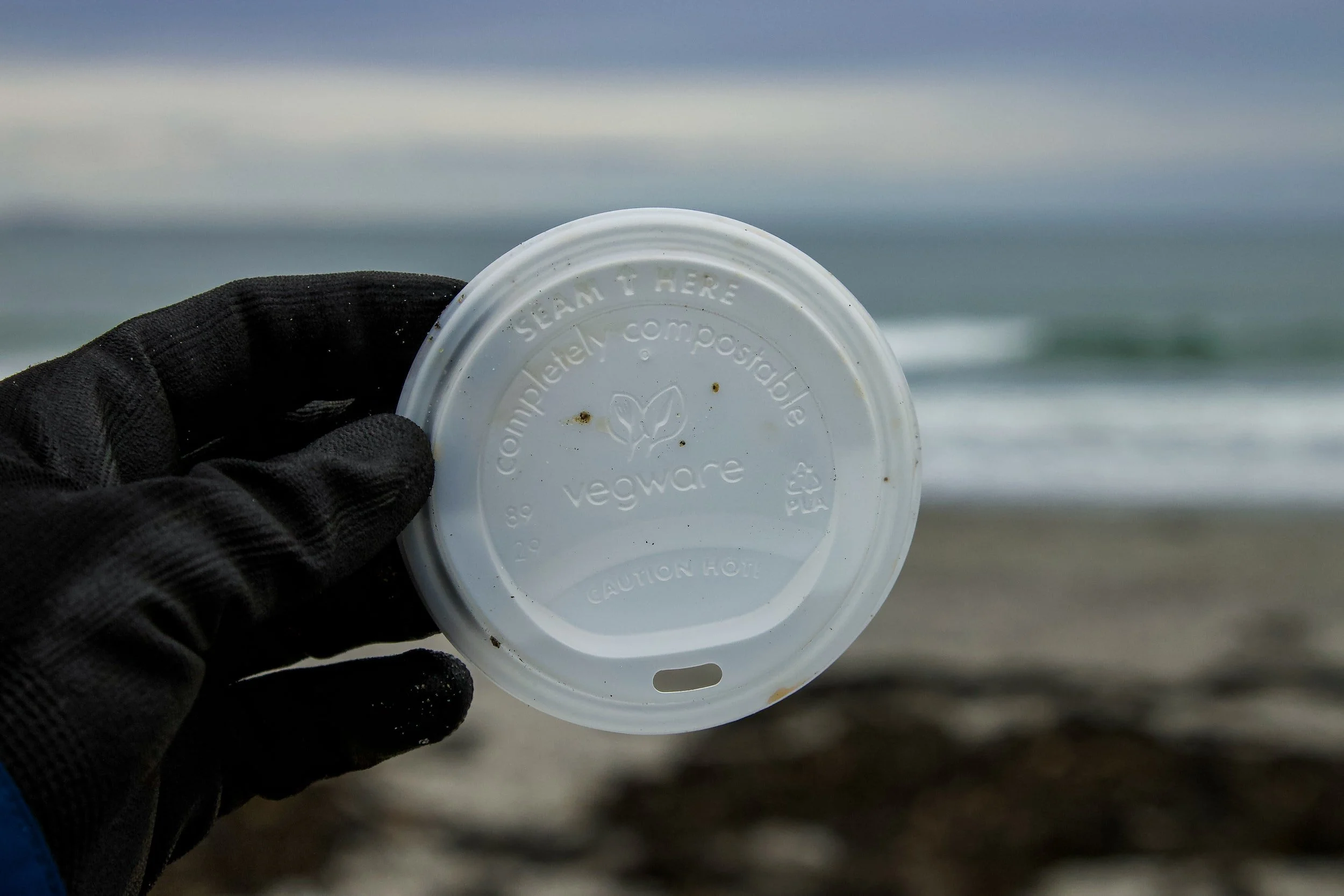How Long Does It Take to Decompose? 51 of the World's Most Popular Items
Have you ever thrown something away and wondered where it ends up, and how long it’s going to be there for?
If you landed on this article, then odds are you have. And when it comes to answering that question, it depends on two things:
Where the item ends up: Is it a landfill, industrial composting facility, the ocean, or somewhere else?
What material the item is made of: Is it made from plastic, bamboo, aluminum, or something else?
Based on these two variables, an item can take either 90 days to break down, or 1,000 years. In this article, you’ll learn how an item decomposes, and the amount of time it takes 51 of the most common household items to decompose (think: milk jugs, disposable diapers, and sandwich bags).
How Do Items Decompose?
All living and nonliving things eventually break down into smaller compounds. This natural process takes place with the help of microorganisms (i.e. bacteria and fungi)–which digest items bit by bit–resulting in an end product of water, organic matter, and carbon dioxide (or methane, if it’s not in a proper environment for decomposition).
For an item to decompose at a quicker rate, it’s crucial to have an environment with plenty of light, water, oxygen, and a warmer temperature (1).
When it comes to decomposition, there’s a very important distinction to make: The difference between “biodegradable” and “compostable” products…
Biodegradable vs. Compostable: What’s the Difference?
Technically, everything is biodegradable and compostable, but there’s a vast difference between the two…
A biodegradable product breaks down into smaller compounds with the help of microorganisms in an unspecified time frame (it could be 90 days, or up to 1,000 years).
Here’s the kicker: In aerobic conditions (like a certified composting facility), biodegradable products break down to produce carbon dioxide. However, in anaerobic conditions (like a landfill), they break down to produce carbon dioxide and methane. Methane is a potent greenhouse gas that has more than 28 to 36 times the warming power of carbon dioxide (2). Not only that, the lengthy process of biodegradation can release toxic chemicals and leave behind microplastics.
Compostable products, on the other hand, break down in a specific time frame in a controlled moist, warm, aerobic (oxygenated) environment to produce a non-toxic, soil-like compost that helps support plant life. This usually happens within just 90 days.
In short, everything that is “compostable” is biodegradable, but not all “biodegradable” things are compostable.
The Decomposition Rate of 51 Common Items (from the shortest to longest amount of time)
This list of items shows the decomposition rate of the world’s most common everyday items–from the shortest period of time to the longest (1).
Vegetables: 5 days-1 month
Tissue Paper: 30 days
Paper Towels: 2-4 weeks
Paper & Newspaper: 2-6 weeks
Photodegradable Packaging*: 6 weeks
Cardboard: 2-12 months
Flaxstic Pela Products: 3 months
Cotton Gloves: 3 months
Thread: 3-4 months
Bamboo Toothbrush: 3-4 months
Rope: 3-13 months
Banana Peels: up to 6 months
Cotton T-Shirt: 6 months
Orange Peels: 6 months
Latex Gloves: several months to several years
Rubber Bands: up to a year
Tree Leaves: 1 year
Plywood: 1-3 years
Wool Clothing: 1-5 years
Q Tips: 4-5 years
Plastic-Coated Paper Milk Cartons: 5 years
Egg Cartons: 5 years
Cigarette Butts: 10-12 years
Plastic-Lined Coffee Cups: 20-30 years
Leather Shoes: 25-40 years
Nylon Fabric: 30-40 years
Tin Can: 50 years
Rubber Boot Soles: 50-80 years
Batteries: 100 years
Aluminum: 200-500 years
Wet Wipes: 100 years
Synthetic Fabric: 100+ years
Shampoo Bottles: 100-400 years
Plastic Straws: 200 years
Plastic Cutlery: 200 years
Disposable Diapers: 250-500 years
Hairspray Bottles: 200-500 years
Aluminum Foil: 400 years
6-Pack Holders: 450 years
Plastic Water Bottles/Cups: 450 years
Ink Cartridges: 450-1,000 years
Plastic Bottle Caps: 10 to 500 years
Plastic Toothpaste Tubes: 500 years
Plastic Toothbrushes: 500 years
Plastic Coffee Pods: 500 years
Sanitary Pads: 500-800 years
Styrofoam Cup: 500+ years (we’re not sure yet)
Plastic Bags: 10-1,000 years to photodegrade*
Tires: 2,000 years
Glass: Unknown (it takes so long to degrade that we don't know the exact time)
Styrofoam: Never
Now, to be clear, these are estimates. And many of them are probably quite generous. If one of the above items is thrown into a landfill, it most likely won’t break down (since there isn’t any oxygen). That’s why reusing and recycling is so important.
*Photodegradable packaging gradually breaks down when in the presence of light, rather than living organisms. When this happens, the polyethylene's polymer chains of plastic become brittle and start to crack due (1).
So What Can You Do?
How do you avoid being the statistic in which the average American produces 4.4 pounds of trash each day (3)?
Well, I’m sure you’ve heard it before: Reduce, Reuse, Recycle.
But there are other “R” things you can do, too…like Refuse, Repair, Repurpose, Re-Gift, Repair, and Refill.
Perhaps the best thing you can do is cut back on the number of items you buy that have a longer “landfill shelf life” per se. Instead of buying plastic toothbrushes, toothpaste, water bottles, and sandwich bags, switch to plastic-free alternatives, which are often compostable, too. These small actions taken daily can have a massive impact on the world around you.
Frequently Asked Questions
-
No. Landfills are designed to store waste, not break it down. Why, you ask? Because everything that is dumped into a landfill doesn’t have access to the oxygen it needs to break down. (Food waste can’t even break down in landfills.)
This is why landfills are the third-largest source of human-related methane emissions in the United States–accounting for approximately 14.5 percent of these emissions in 2020 (2).
-
Biodegradable Products…
Decompose with the help of microorganisms like fungi or bacteria within an unknown time frame.
Aren’t always the best option: A plastic-lined paper coffee cup will eventually degrade, but the plastic material will leave behind microplastic waste.
Biodegradable products don’t require a certification.
Technically everything is biodegradable, but for materials like plastic, it can take hundreds of years to do so. This lengthy process can also release toxic chemicals and leave behind microplastics.
Compostable Products…
Disintegrate into non-toxic, natural elements (AKA compost) within a specific time frame–usually 90 days.
Require microorganisms, humidity, and heat to create a finished composted product like soil-conditioning material or mulch.
Don’t leave behind plastics or toxic chemicals.
Compostable products require a certification. Which requires “competent and reliable scientific evidence that all the materials in the item will break down into, or otherwise become part of, usable compost” (4).
-
“Zero waste”, as defined by the EPA, is “the conservation of all resources by means of responsible production, consumption, reuse, and recovery of products, packaging, and materials without burning and with no discharges to land, water, or air that threaten the environment or human health (5).”
In short, that would mean a certified compostable product is zero waste, whereas a biodegradable product is not.
Caroline Nicks
Just a gal with a goal of making sustainability realistic and doable for others. Oddly passionate about picking up trash. In love with my hubs and parti poodle son, Budapest. Kansas-grown. Current stomping grounds: Newport Beach, CA.


